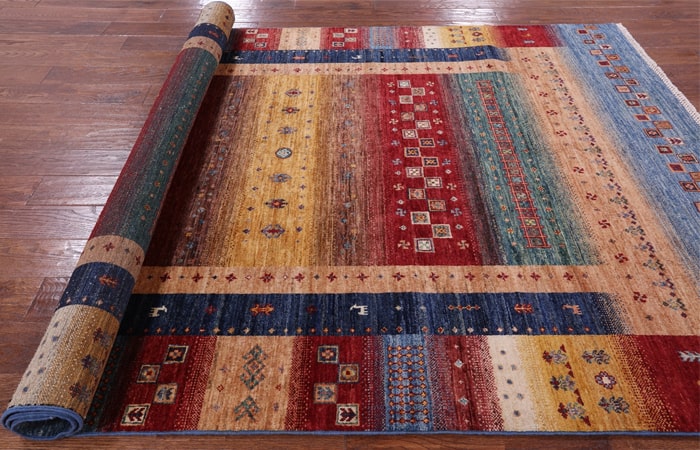The Gabbeh also spelled Gabba, is a traditional type of Persian rug. Kurds, Luris, and Qashqais all live in the Zagros Mountains of Iran and appreciate this rug style. Women are the conventional Gabbeh weavers. This article aims to provide as much information as possible on this specific type of Persian rug.
The Features of Gabbeh Rug
The features include:
- Gabbeh rugs typically have a knot density between 70.000 and 150.000 knots per 10.8 square foot.
- The rug’s patterns are relatively straightforward, including primarily square or rectangular things with a few depictions of animals on occasion.
- Gabbeh rugs have simple modern designs with animal or plant motifs.
- Compared to other Persian rugs, Gabbeh rugs are typically thicker.
- Gabbeh rugs are natural and handspun wool yarn dyed with plant colors.
- These Rugs are of different shapes, rectangular and square, and sometimes round shapes.

The Origin and History
A Gabbeh rug is a Persian rug manufactured by expert rug weavers using pure, fine wool naturally dyed in various colors. The Gabbeh rug is typically pronounced as gah-beh. The name of this rug type, “Gabbeh,” comes from the Arabic phrase meaning “unclipped” or “unfinished.” The rug has a high pile and a basic design.
Historically, women of the Qashqai tribes in southwestern Persia wove the first Gabbeh rugs. The first rugs were crudely knotted with vividly colored wool and featured a small selection of beautiful patterns inspired by geometry and imitating various animals, humans, and trees. The earliest record of Gabbeh rugs was written in the sixteenth century A.D.
The Last Word
Because of its elegance and simplicity, the Gabbeh is a favorite of many contemporary designers. People pay more attention to Gabbeh as they get more well-known. Some Persian Gabbeh area rugs are now made with a very fine weave and are quite costly.
